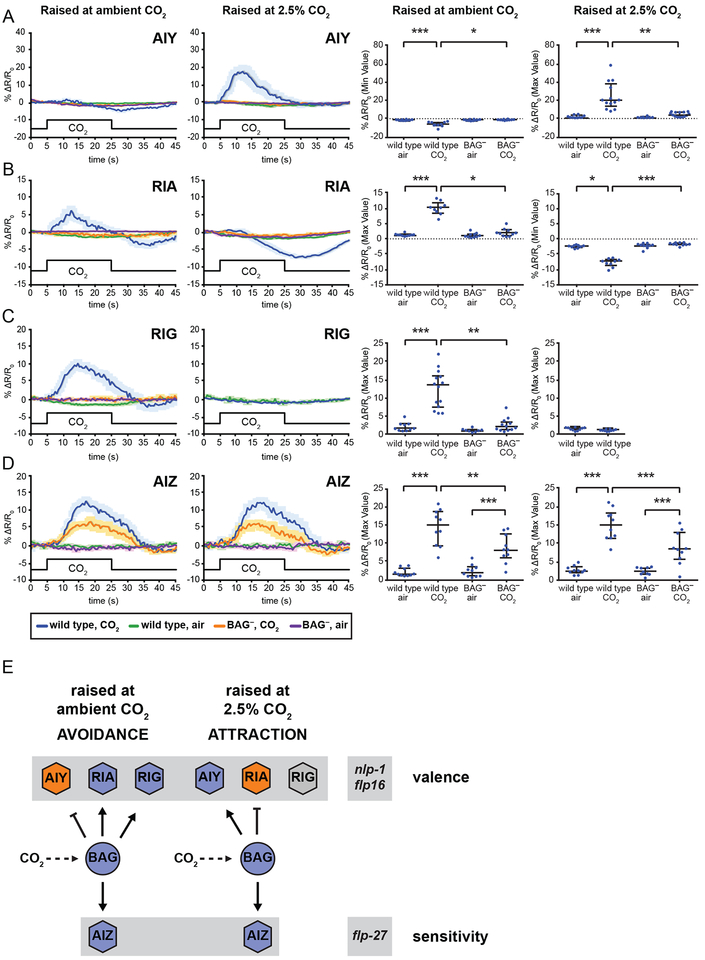Figure 4. First-order interneurons contribute to CO2 avoidance and attraction through experience-dependent modulation of their CO2-evoked activity.
(A) AIY is inhibited by CO2 in animals raised at ambient CO2 and activated by CO2 in animals raised at high (2.5%) CO2. Both responses are BAG-dependent. *p<0.05, **p<0.01, ***p<0.001, Kruskal-Wallis test with Dunn’s post-test. n=8–14 animals per genotype and condition.
(B) RIA is activated by CO2 in animals raised at ambient CO2, and inhibited by CO2 in animals raised at high (2.5%) CO2. Both responses are BAG-dependent. *p<0.05, ***p<0.001, Kruskal-Wallis test with Dunn’s post-test. n=9–10 animals per genotype and condition.
(C) RIG is activated by CO2 in animals raised at ambient CO2, but does not respond to CO2 in animals raised at high (2.5%) CO2. The response is BAG-dependent. **p<0.01, ***p<0.001, Kruskal-Wallis test with Dunn’s post-test (raised at ambient CO2) or p=0.1060, unpaired t test (raised at high CO2). n=8–14 animals per genotype and condition.
(D) AIZ is activated by CO2 exposure in animals raised at both ambient and high (2.5%) CO2. Both responses show BAG-dependent and BAG-independent components. **p<0.01, ***p<0.001, one-way ANOVA with Sidak’s post-test. n=10 animals per genotype and condition.
For A-D, calcium responses were measured using the ratiometric calcium indicators yellow cameleon YC3.60 or YC2.12. Left graphs show composite calcium responses to a 20-s pulse of 15% CO2. Solid lines indicate average calcium responses; shading represents SEM. Blue lines indicate the response of wild-type animals to CO2; green lines indicate the response of wild-type animals to an air control; orange lines indicate the response of BAG-ablated animals to CO2; purple lines indicate the response of BAG-ablated animals to an air control. Right graphs show maximum values (for excitatory or neutral responses) or minimum values (for inhibitory responses) of % ΔR/R0 for each animal. Lines show medians and interquartile ranges.
(E) A model for CO2 response in C. elegans. Animals raised at ambient CO2 avoid CO2, while animals raised at high CO2 (2.5% CO2) are attracted to CO2. CO2 response valence is determined by the coordinated activity of three interneuron pairs postsynaptic to the CO2-sensing BAG neurons: AIY, RIA, and RIG. In animals raised at ambient CO2, activation of RIG and RIA combined with inhibition of AIY results in CO2 avoidance. In animals raised at high CO2, activation of AIY, inhibition of RIA, and silencing of RIG results in CO2 attraction. Activation of a fourth interneuron pair, AIZ, dampens behavioral sensitivity to CO2 regardless of valence. CO2 response is regulated by a combinatorial code of neuropeptides: NLP-1 reduces CO2 avoidance in animals raised at ambient CO2, FLP-16 reduces CO2 attraction in animals raised at high CO2, and FLP-27 enhances CO2 response under both conditions.
See also Figures S3 and S4.

